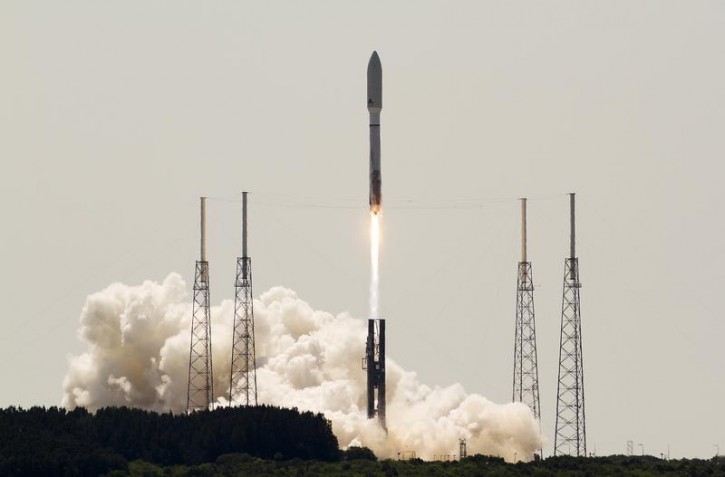 Florida – An unmanned Atlas 5 rocket blasted off from Cape Canaveral Air Force Station in Florida on Wednesday to put a mostly classified experimental space plane into orbit for the U.S. military.
Florida – An unmanned Atlas 5 rocket blasted off from Cape Canaveral Air Force Station in Florida on Wednesday to put a mostly classified experimental space plane into orbit for the U.S. military.
Subscribe to our Daily Roundup Email
The 206-foot (63-meter) tall rocket, built and flown by United Launch Alliance, a partnership of Lockheed Martin and Boeing, soared off its seaside launch pad at 11:05 a.m. EDT to deliver an X-37B drone ship into orbit for a fourth mission.
As with previous flights, the U.S. Air Force would not say what the space plane, which resembles a miniature space shuttle, will be doing in orbit or how long it will stay there.
The last X-37B Orbital Test Vehicle landed itself at Vandenberg Air Force Base in California on Oct. 17, 2014, after 675 days in orbit. The program’s first flight in 2010 lasted 224 days. The second in 2011-2012 lasted 469 days.
The vehicles, built by Boeing, are intended to serve as orbital test beds for future sensors and technologies. The space planes are 29 feet long and have a wing span of 15 feet, roughly one-quarter the size of NASA’s now-retired space shuttles.
For Wednesday’s flight, the military declined to say which of its two X-37B vehicles is flying, but it did for the first time unveil a few experiments that are onboard.
The payloads include an experimental propulsion system, known as a Hall thruster, which was developed by the Air Force. NASA also is flying samples of almost 100 polymers, composites and other advanced materials to test how they fare in the harsh environment of space.
After the X-37B is released into orbit, its upper-stage engine also will deploy 10 tiny satellites, called CubeSats. One spacecraft is a crowd-funded technology effort called LightSail to develop a propulsion system that uses the pressure of photons from the sun, a technique known as solar sailing, rather than chemical propellants.
“One test is worth 1,000 expert opinions,” Planetary Society Chief Executive Bill Nye said in an interview during ULA’s launch webcast.
The Air Force is in the process of relocating the X-37B program from California to Florida and has taken over two of the space shuttle’s mothballed processing hangars at NASA’s Kennedy Space Center. The space plane launched Wednesday may land for the first time at the shuttle’s runway.
“The program expects to have the capability to land in Florida in mid- to late 2016,” said Air Force spokesman Chris Hoyler.

Space the next battlefield.